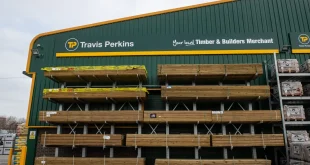That men do not learn very much from the lessons of history is the most important of all the lessons of history.
Ever get that sense of déjà vu?
Housing transactions are on the rise, reflecting the fact that more people are able to move house.
House prices, too are on the up, having jumped at their fastest, biggest pace since 2006.
They haven’t risen this fast since the heady days of the boom before the credit crunch/global financial meltdown/general all round banker cock-up.
The papers say that this is in part due to the success of the Government’s initiative Help to Buy which is underwriting 95% mortgages on newbuild properties, allowing people to purchase them with a bigger mortgage/smaller deposit than the financial institutions have been happy with up until now.
Many in the industry campaigned for such an initiative, arguing that the best thing to get construction moving again would be some way of encouraging first time buyers into the market. Clearly, that is right.
Manufacturers of building materials need a decent level of new housebuilding if they are to provide an outlet for the stuff their factories produce. Housebuilders need to know that their potential customers can purchase their properties if they are to invest in building new ones.
RMI work, the mainstay of most small to medium sized builders, is largely – though not solely – based around property transactions, with people either improving before they move or improving what they have bought in the last couple of years. You don’t get a proper churn of property transactions without new people coming in at the bottom of the chain.
It will be interesting to see what happens when Help to Buy is extended to older homes rather than just new-build. Not everyone who has had trouble raising a deposit or obtaining a mortgage in the past has wanted to buy a new build property.
Also, with housebuilding having sunk to its lowest levels since 1920 in the last few years, there are, arguably, more properties available in this sector, therefore more scope to get things moving more quickly.
So, it’s all going swimmingly isn’t it?
But – there’s always a but with these things. We still have incredibly low mortgage interest rates and will continue to have them until unemployment rates reach Governor Carney’s target level. There’s no doubt that demand for buying houses is increasing and, unless housebuilders double, treble or even quadruple current activity levels, we will be left with a good old-fashioned supply-and-demand situation.
It doesn’t take an economics degree to know that when demand exceeds supply prices rise. This is especially true in a housing situation where interest rates on mortgages are low, making housing seem more affordable. Rising house prices are good in that they make everyone feel a bit better about their investments, they make housebuilders feel that it’s worth building.
But unless wages are rising at the same levels, rising house prices just make home ownership ever more of a pipe dream for anyone earning average or less than average wages. The Government doesn’t have an unlimited supply of funds for this; at some point Help to Buy will have to stop. When it does, will we see another housing bubble burst?
I hope not, but I can’t help feeling that we’ve been here before.
 Builders Merchants Journal – BMJ Publishing to Builders Merchants and the UK merchanting industry for more than 95 years
Builders Merchants Journal – BMJ Publishing to Builders Merchants and the UK merchanting industry for more than 95 years



